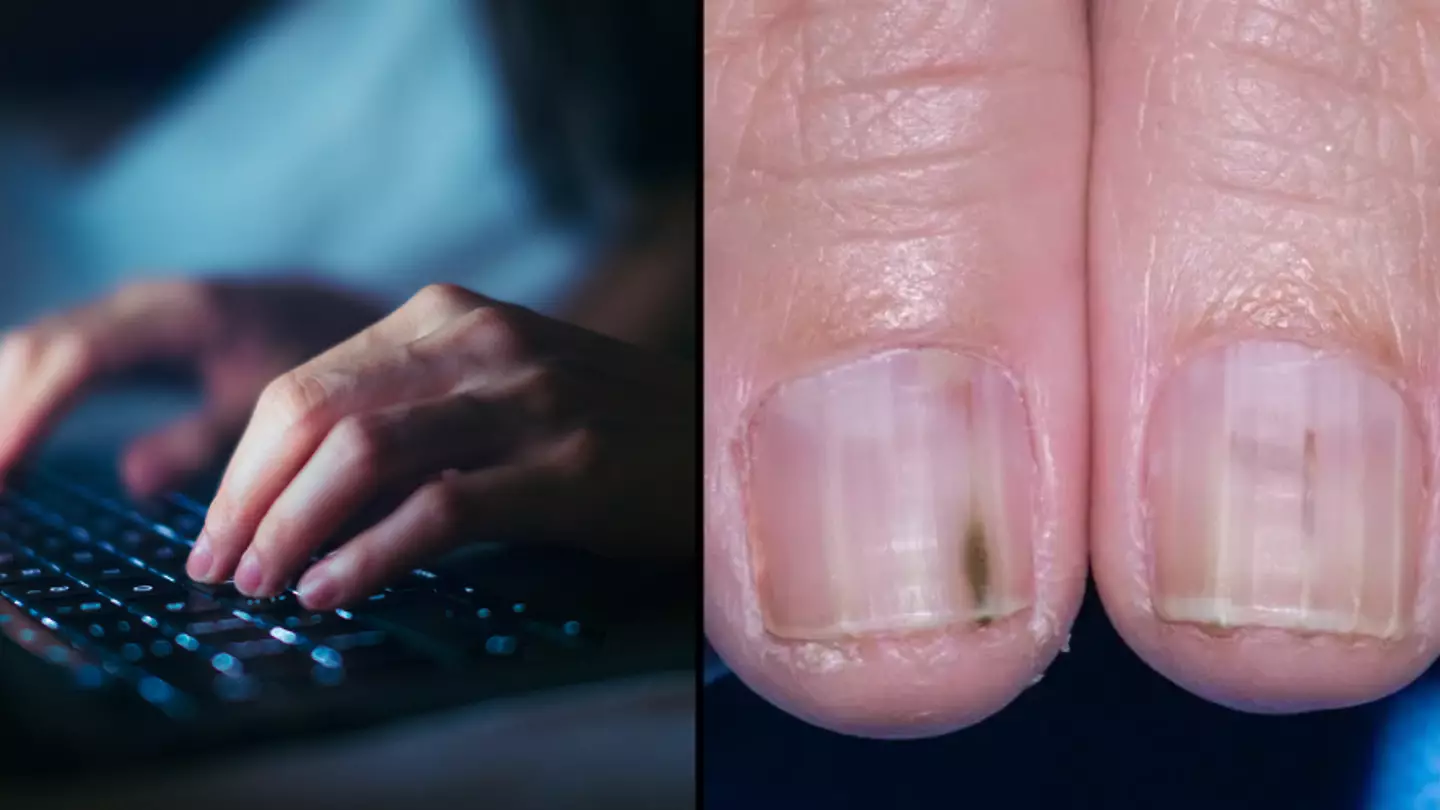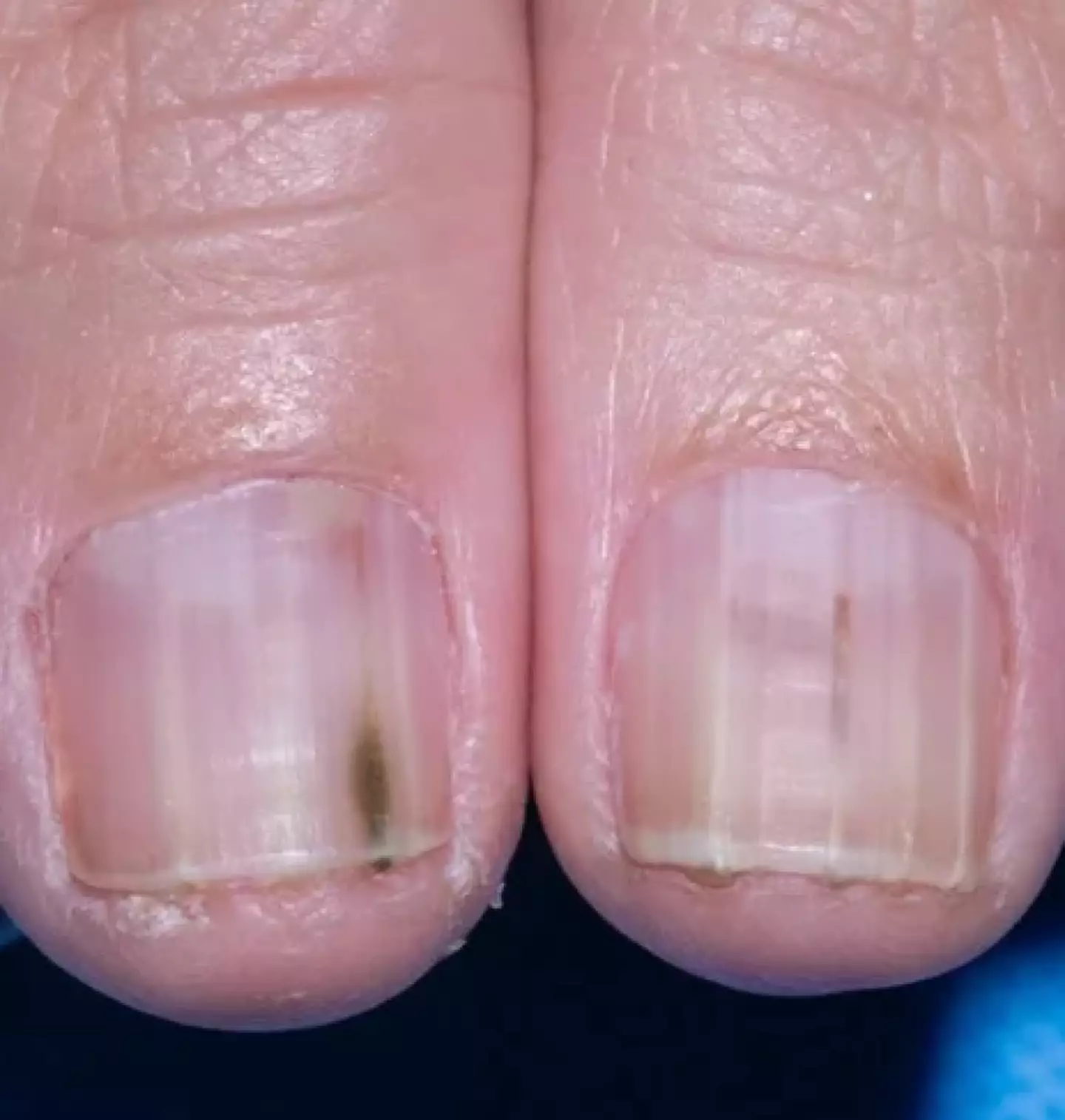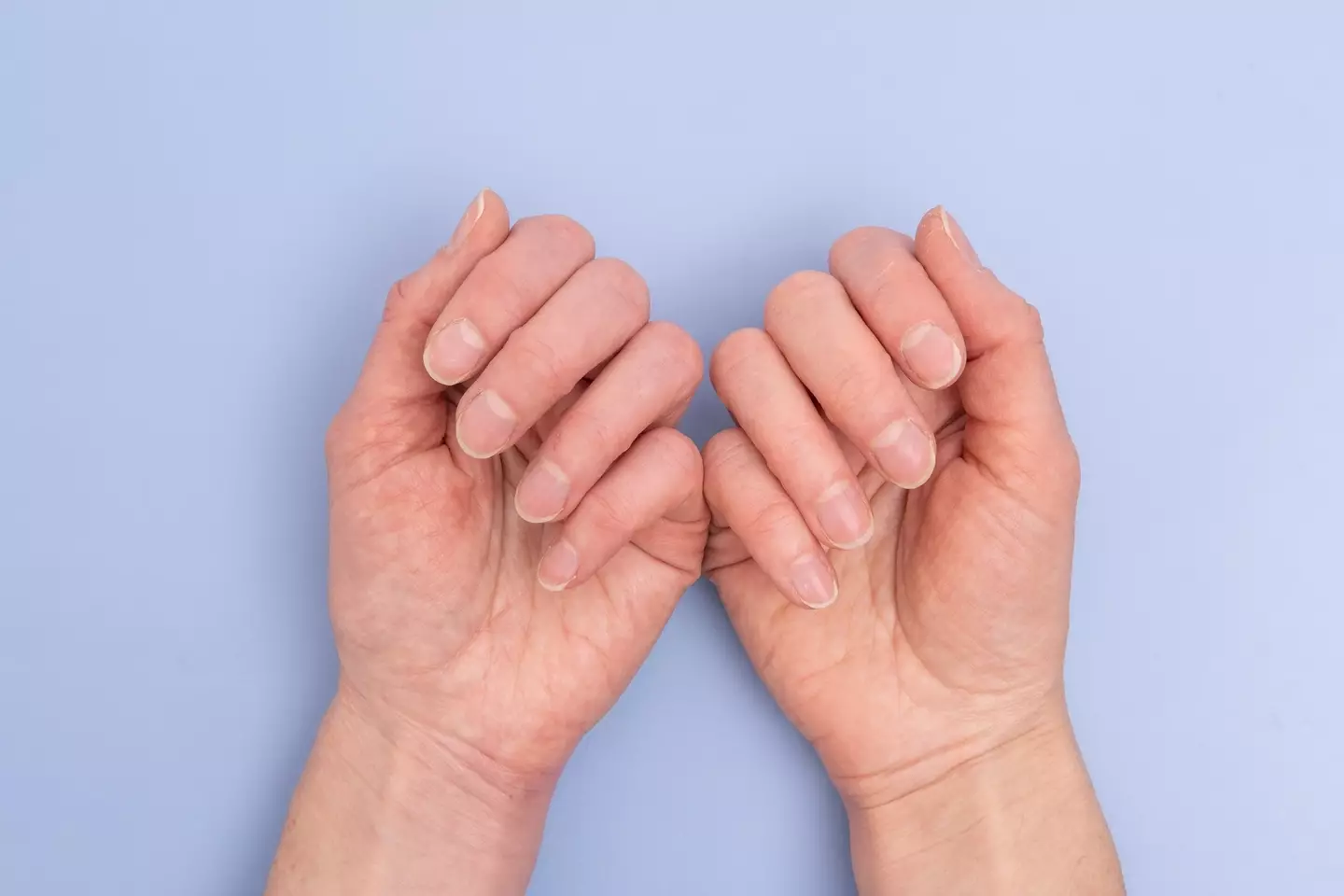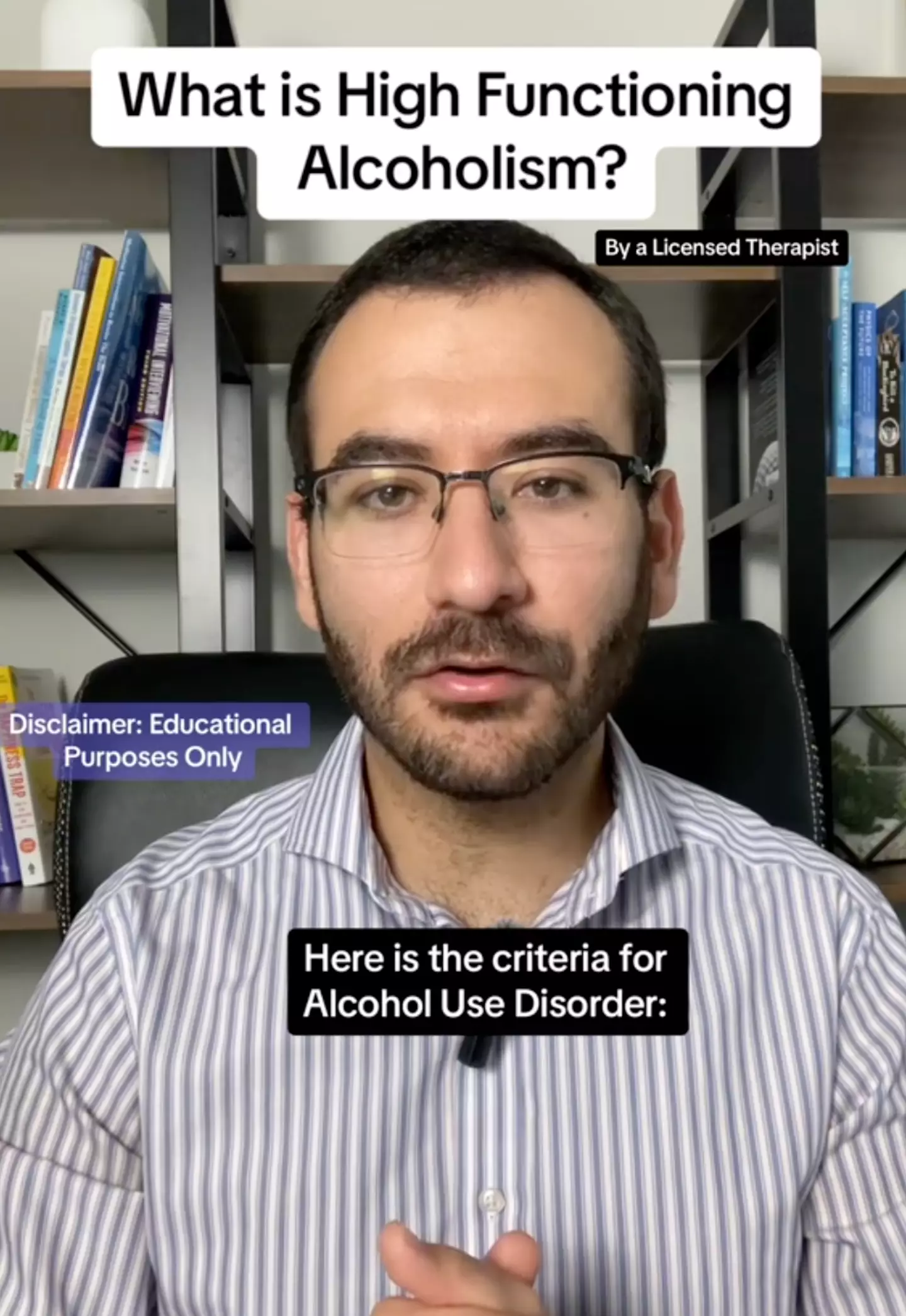
A doctor has explained why twitching in your body could be an early sign linked to three deadly diseases.
On the whole, the NHS has insisted that twitches in eyes and muscles ‘are usually nothing to worry about’ and are often linked to stress, anxiety, tiredness, caffeine, or medicine use.
However, Monika Wassermann, MD at Oliolussio, has warned that it could be a sign of one of three types of cancers, reports the Express.

Early signs of twitching could mean something more serious (Getty Stock Images)
The doctor explained that twitching could be a sign of a brain tumour.
She said: “While seizures mostly arise from epilepsy, a brain tumour can irritate the brain’s neurons and cause tingling, twitching, or muscle contractions.
“If a tumour develops in the occipital lobe, temporal lobe, or brain stem, one may have double or blurred vision. Another indicator is eye-twitching.”
Meningioma, one of the most common types of a brain tumour, takes place when it starts to press on the brain and stop its usual function.
“The frontal lobe manages decision making, problem-solving, concentration, and thinking speed functions,” she explained.
Tumours can also press on blood vessels and affect the spinal cord.
Tumours that reach the spinal cord could lead to:
1) Prostate cancer
2) Lung cancer
3) Breast cancer

If you’re twitching regularly then contact your GP (Getty Stock Images)
Prostate, lung, and breast cancer can spread to that spinal cord area.
Leukaemia, another type of blood cancer, is also known to reach the backbone, which usually shows in ‘single or multiple muscle twitches, jerks, and/or spasms’, according to cancer.Net.
Cancer Research UK explains: “Seizures happen in up to 80 out of every 100 people (up to 80 percent) with a brain tumour.
“You might have some jerking or twitching of your hands, arms or legs. Or your seizure might affect your whole body.
“Having a seizure is very frightening. Different illnesses can cause seizures and it is important that you see your doctor immediately or go to A&E if you have one.”
If you start to notice problems with your eyes, then that’s also a sign that you could have a tumour.
“You might find that your eyesight is getting worse and glasses are not helping,” Cancer Research UK note.
“Or your vision comes and goes. You might lose the ability to see out of the corner of your eyes, making you bump into cars or objects on your left or right side.”
If you’ve been affected by any of these issues and want to speak to someone in confidence, contact Macmillan’s Cancer Support Line on 0808 808 00 00, 8am–8pm seven days a week.

Around 167,000 people die from cancer every year in the UK according to Macmillan, meaning that keeping your eye out for any changes to your body which could mean something sinister is important.
Symptoms such as unexplained weight loss, changes in bowl or bladder habits, lumps and new moles are things we know to get checked out – but did you ever think to check your hands for signs as well?
Turns out our fingernails could also reveal warning signs.
An important change to look out for on your nails is the appearance of a dark line running vertically down the nail from the nail bed to the tip.
The lines are known scientifically as melanonychia, and can be either brown or black in colour.
Discolouration does not necessarily mean you should be immediately worried, as the change can also be caused by trauma or pregnancy. People with a darker complexion are also more likely to develop the lines.
However it’s worth getting them checked to rule out anything sinister, especially as recent studies have revealed it could be a sign of BAP1 tumour predisposition syndrome.

Stripes in the nails are something to look out for (JAMA Network)
According to the US National Cancer Institute, the rare syndrome is caused by a genetic mutation with affects a gene that stops the body from developing into cancer.
The mutation means you’re at a higher risk of developing tumours of the skin, eye, kidney, and mesothelium (the tissue that lines the chest and abdomen).
These tumours can develop at any age and are fast growing, however it’s important to note that not everyone with the mutation will develop cancer. Benign tumours can also occur.
Another sign to look out for is a small thickened area growing under the nail along with a white line.
Other changes in your nails which you should get checked out are:
- Nails lifting away from the bed
- Redness and swelling around the nail
- Irregular pigment (such as green or black colours)
- Discolouration of the skin around the nail
- Any other significant nail changes such as splits, cracks or deformities

It comes following a new study. (Getty stock photo)
Surprisingly your fingers can also reveal if you are at risk of developing lung cancer, with clubbing of the nails seen as an early warning sign for the disease. Cancers often associated with clubbing are lung cancer and mesothelioma.
Clubbing is a common symptom of issues related to the heart or lungs as well as diseases such as ulcerative colitis and Crohn’s.

This is something for you to remember tomorrow when you’re looking in the bathroom mirror.
When you run through that mental tally of everything you have to do to get ready for the day, you’re probably thinking how to get everything done as fast as possible so you can enjoy your cup of coffee and breakfast – but that’s a critical mistake.
If you’re rushing this one thing, you could end up regretting it big time.
A study by US scientists have found if you don’t clean one particular area, you’re increasing your risk of developing two types of cancer in particular.
If you don’t develop cancer, you’re still at risk of diabetes and high blood pressure because of this one task.
The cancer you could be in for are head and neck squamous cell carcinoma.

You can increase your risk of cancer if you make this mistake (Getty Stock Images)
This is because the cancers are linked to bacteria in your mouth that can also cause gum disease.
Study author Professor Richard Hayes, from New York University (NYU) explained that having good oral hygiene is essential to minimising your risk of cancer.
So, don’t rush brushing your teeth.
He said: “Our results offer yet another reason to keep up good oral hygiene habits.
“Brushing your teeth and flossing may not only help prevent periodontal disease but also may protect against head and neck cancer.”
In the UK, there are almost 13,000 new cases of head and neck cancer every year, and as the UK Adult Oral Health Survey found, only 30 per cent of people floss, there’s definitely a problem that needs to be fixed.
The symptoms of head and neck cancer are subtle, which means that when they become obvious, it tends to be in the later stages and harder to treat.
Macmillan Cancer Support explained that nine in 10 head and neck cancers start in squamous cells, which are cells that cover the lining of the mouth, nose and throat.

The study found that not brushing your teeth properly can increase your risk of cancer (Getty Stock Images)
The study, which was published in JAMA Oncology, followed the diets, lifestyles and medical history data around 160,000 people in the US who had to rinse with mouthwash and give them saliva samples.
They then tested the samples and the microbes and when following up 15 years later, 236 participants were diagnosed with head and neck squamous cell carcinoma.
Their oral microbe DNA was then compared to the 458 participants who didn’t get cancer and found 13 different types of bacteria that could be linked to the cancer, increasing your risk by 50 percent.
The study co-author said: “Now that we have identified key bacteria that may contribute to this disease, we next plan to explore the mechanisms that allow them to do so and in what ways we can best intervene.”

But in the same breath, it’s just as easy for us to brush off warning signs about our health and put our worries to the back of our minds instead of getting a once over from our GP.
It might be something and nothing, but occasionally, you might actually be in need of urgent medical attention.
Since singer Halsey announced that she was ‘lucky to be alive’ in an Instagram post on Tuesday (4 June) while alluding to the fact she is suffering from lupus and leukaemia, it’s given people a nudge to be more observant towards their body.
In the UK alone, there are more than 9,900 new cases of leukaemia each year, while there is a whopping 62,700 across the pond in the US.

There are more than 9,900 new cases of leukaemia each year in the UK. (Getty Stock Image)
So it’s super important to be aware of the symptoms of this blood cancer – even though they may mirror those of non-life threatening illnesses.
But to be on the safe side, make sure you get yourself checked if you experience any of these eight early warning signs.
Dizziness or feeling lightheaded
If you haven’t been on the waltzers, the fact you feel dizzy or lightheaded could suggest you might be unwell.
For those who notice this sensation regularly, it’s best to check in with your doctor as it could be a sign that you may be suffering from leukaemia, Blood Cancer UK explain.
As the disease stops your body making healthy red blood cells, this can cause a person to become anaemic and begin to feel tired, unwell, dizzy or lightheaded as well as appearing pale or washed out.
However, it could be something much less sinister, as many common illnesses can have these effects on you.
Frequent infections
If it feels as though your immune system has taken a beating and you are constantly copping coughs and colds that seem impossible to get rid of, you should head to your GP.
Contrary to popular belief, it isn’t normal to be feeling under the weather for weeks and weeks at a time and it could be a sign that something else is going on.
Leukaemia sufferers often experience infections that are ‘frequent, severe, or last longer’ than usual as the condition can also stop your body making white blood cells – which fight off illnesses – as it should too.
Having less of these floating about inside your skeleton make you more susceptible to sickness, while you may also notice a sore throat and mouth sores cropping up too.

Dizziness or feeling light headed could be a sign. (Getty Stock Images)
Headaches
Has it been a really long week that warrants a banging headache? Probably, but if they keep coming back to haunt you, you should mention it to a medical professional.
Although they are usually associated with brain tumours, headaches and visual issues can also be a symptom of leukaemia.
If you have a very high count of white blood cells, this can clog the smallest blood vessels in the brain which will subsequently leave you experiencing a headache.
According to Cancer Research UK, this can also cause issues with your vision and eyes, but this is less common.
Bruising
It seems like a lot of us can’t go on a night out without coming home covered in mysterious bruises and looking as though we’ve done ten rounds with Tyson – but keep an eye on lesions if they keep appearing seemingly without reason.
If you haven’t got your drunken self to blame for the bruises, it could be a symptom of leukaemia.
That’s because the blood cancer can affect the cells which help your blood to clot, which are called platelets.
As your body is unable to produce enough of these to plug up bleeding blood vessels, you are more likely to bruise easily and are essentially a lot more delicate than you would usually be.
Blood Cancer UK said you should keep tabs on any red or purple spots or rashes caused by bleeding under the skin which turn up, as well as blood in your poo, heavy periods, and difficulty with speech and movement.

Blood cancer can affect the cells which help your blood to clot, which are called platelets. (Getty Stock Image)
Bleeding
So you already know that your platelets play a very important role in keeping your body ticking over nicely and these little babies are made in our bone marrow.
They help form blood clots to slow or stop us bleeding, while also helping wounds we suffer to heal – so if you are running low on them, you may notice unusual bleeding.
Women might notice excessive amounts during menstruation, but your gums could also point to this too.
Experts explain that if you notice something out of the ordinary, such as bleeding gums when you are brushing your teeth, it could be a sign that you need to get checked out.
Frequent nosebleeds are also another warning sign you should not ignore.
Fever
Feeling all hot and bothered and nearly breaking your thermometer could be a symptom of leukaemia.
As we previously touched on, the fact your body might not be producing enough white blood cells leaves you wide open to infections – and a high temperature is a big indicator of these.
On top of that, you may also experience night sweats, but these will commonly occur alongside other symptoms too.
Macmillan says you should only be alarmed if you are perspiring enough to ‘soak through bedclothes and bedding’.
Your body will rise in temperature while battling against the disease, in what is known as an ‘inflammatory response’.
So pick up the phone and call your GP rather than just turning the fan on.

Soaking through bedding and bed sheets when you have a fever should be a cause for concern. (Getty Stock Image)
Swollen lymph nodes
As we all know by now, our lymph nodes tell us a lot about what’s going on inside of our bodies.
If you notice that the ones in your neck, armpit, or groin are swollen, it suggests that you may be suffering with some sort of illness – which may be minor, or could be something severe like leukaemia.
They may feel sore to the touch and become swollen – and if this is the case, you need to get checked out.
It’s easy to mistake these for something harmless, but they could be a warning sign of something a lot more sinister such as blood cancer.
Aching joints
You might notice that your joints and bones seem to be playing up and giving you pain if you are suffering from leukaemia, as the cells of this disease build up in the bone marrow
Pain usually flares up at different times of the day, according to medical experts.
People typically complain of feeling the worst discomfort in the long bones which they have in their arms, legs and ribs, while children might start limping or avoiding walking due to the pain.
Additional pain may also be felt below the ribs on the left side of your body, where your liver and spleen are located.
Leukaemia can cause these to swell up, so let your doctor know if you have any bloating, pain, swelling or general discomfort in that area.
It’s easy to think that you’re eating too much junk food or drinking too much alcohol, and set up a plan to combat the issue, but some people can’t stop no matter how hard they may try or want to.
This is called alcoholism and according to the latest study from GOV.UK, 608,416 adults across the UK are affected by the problem.
It’s something that can derail someone’s life, but according to health experts, it is also possible to be an alcoholic and a contributing member of society.

You might know a high functioning alcoholic (Getty Stock Photo)
Licensed therapist and mental health expert Jeffrey Meltzer, known as TherapyToThePoint on his social media accounts, has shared the eight things that a ‘high functioning alcoholic’ does, revealing what you should look out for to identify someone that might be one.
What is a High Functioning Alcoholic?
The therapist explained to his 258,000 TikTok followers: “Someone who has high functioning alcoholism maintains jobs, relationships and responsibilities, while struggling with Alcohol Use Disorder (AUD).”
He highlighted that high functioning means ‘performing well in various aspects of life’ while having an alcohol addiction.
Meltzer delved into the DSM 5, which categorises the disorder into mild, moderate and severe depending on different behaviours.
Mild cases are when you qualify for two to three of the criteria, moderate cases are for four to five, while severe cases require meeting six of the criteria, all within a 12 month period.
“These symptoms must represent a pattern and not just isolated events,” Meltzer stated.
Only eight of the 11 apply to high functioning alcoholics.
Drinking more or for longer than planned
The mental health professional highlighted: “For example, intending to have one drink, but consistently ending up having three or more drinks.”
Obviously, this can happen from time to time but if you find yourself or someone else doing this consistently, it may be a wider issue.
Failing to cut down
You may have acknowledged the problem and decided to stop drinking as much, but if you find yourself consistently failing to stop, it could signal AUD.
Longer recovery times
Nobody likes a hangover, but if you’re taking longer amounts of time to fully get over the effects of drinking the day after, it could be a sign of your body struggling to cope with the fallout.
Cravings
They always say to get something greasy down your gob the day after heavy drinking, but craving unhealthy food constantly is never a good sign, as snacks and fast food bites often have little nutritional value.
Drinking in hazardous situations
If someone is using alcohol in situations where it can potentially become ‘physically hazardous’, such as driving or while doing activities such as cooking, it could signal AUD and being a high-functional alcoholic.
Knowingly continuing to drink
The therapist highlighted that there is a problem if you are: “Continuing to drink despite knowing that you have a recurring, physical, or psychological problem that is exacerbated by alcohol.”

The therapist outlined the main signs to look out for (TikTok/@therapytothepoint)
Developing a tolerance to drinking
He explained that if you’re ‘needing more to achieve the same effect’, it is a sign of of your body suppressing its normal responses to toxins, which in the long-term, is detrimental to your health.
Withdrawal symptoms
Meltzer further explained: “Experiencing withdrawal symptoms when you’re not drinking or drinking to avoid these symptoms.”
This might be the biggest tell-tale sign of having AUD, and if you’re able to get through life regardless, it could mean that you’re a high-functioning alcoholic.


